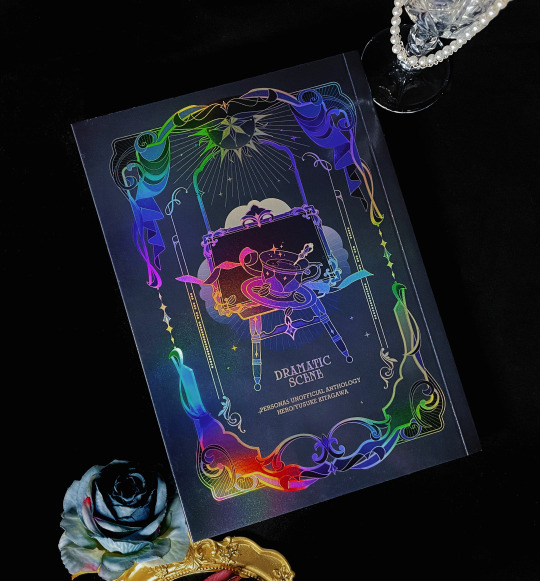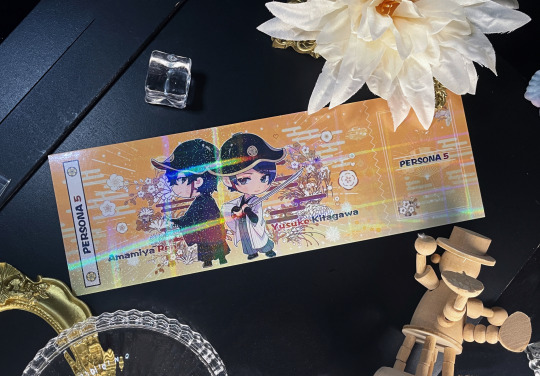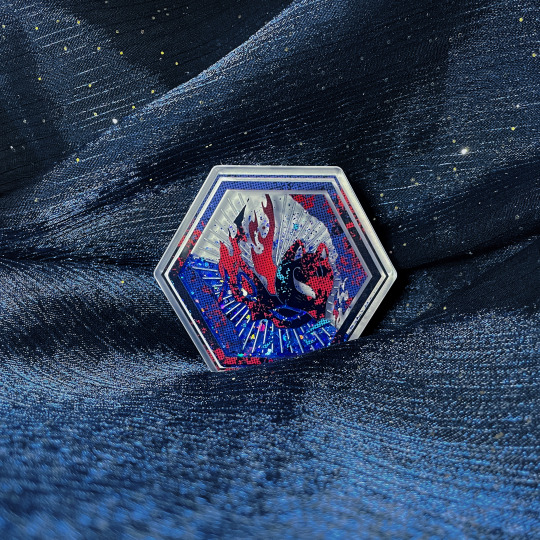#CPSP
Explore tagged Tumblr posts
Text
Helping Young Voices Grow – Speech Pathology at Emerald Hills Medical Centre
Is your child struggling with speech, language, or communication? At Emerald Hills Medical Centre, our Certified Practising Speech Pathologist (CPSP) – a proud member of Speech Pathology Australia (MSPAA) – is dedicated to supporting your child’s unique developmental journey.
We offer specialized care for children and teens facing:
✅ Receptive and expressive language delays
✅ Challenges with speech clarity and articulation
✅ Stuttering and fluency concerns
✅ Literacy difficulties (reading, writing, spelling)
✅ Social communication hurdles
✅ Autism Spectrum Disorder (ASD)
✅ Developmental delays
Our evidence-based therapy aims to boost confidence and faster communication growth in a nurturing and safe environment.
Find us at 5 Emerald Hills Blvd, Leppington NSW 2179
📞 Give us a call: +61 2 9131 2100
📧 Reach out via email: [email protected]
🌐 Visit us at emeraldhillsmedical.com.au
Your child’s voice is important. Let us help them share it with the world.

#SpeechPathology#ChildSpeechTherapy#AutismSupport#SpeechDelay#EmeraldHillsMedical#CPSP#LanguageDevelopment#CommunicationSkills#PaediatricCare
0 notes
Text
When it comes to supporting communication, we take first steps here – Introducing our Speech Pathologist at the Appin Medical Centre!
Is your ability to speak, use language, make social connections, or have good fluency being impacted? Appin Medical Centre is proud to be able to support you and your family via our Certified Practising Speech Pathologist (CPSP) who is passionate about helping those with communication difficulties and a member of Speech Pathology Australia (MSPAA).
Speech pathologists are vital team members when it comes to supporting children and adults with language delays and disorders, and problems with fluency (including stuttering!), voice issues, comprehension, and even swallowing. When it comes to working with children and even adults with neurological considerations, early intervention is key and can be life changing!
Whether it is your child's journey of building their first words, or helping an adult reclaim their ability to communicate after a medical intervention (injury or stroke), our Speech Pathologist offers compassionate professional support developmentally and individually appropriate for their clients circumstances.
📍Find us at 1/74 Appin Road, Appin NSW
📞 Call Us: 02 4488 1090
🌐 Booking online is available at appinmedical.com.au
Helping you, or those you care about, find their voice again!

#SpeechPathologist#AppinMedical#SpeechTherapy#CommunicationMatters#NSWHealth#SpeechSupport#CPSP#AlliedHealth#EarlyIntervention
0 notes
Text



主喜多合志《正因生活不是戏剧》本宣
A5/236P/95 CNY/全年龄 ------------------------------------- 【通贩预约】淘宝:鸽佬垃圾,2月1日-3月15日 https://item.taobao.com/item.htm?id=765364574939&skuId=5262379824387&spm=a213gs.success.0.0.30104831u9XU4h 【场贩首发】广州CPSP&成都CD27 ------------------------------------- ▷STAFF 主催:czoedy 封绘:金锁银匙 刊物设计:404 作者:白川五月/白羽/戗风雪鸢/CIBSEN/苍蓝/Frans/露/millis/坭/鸟笼A.R./NLemon/NPC/圈圈KORO/心/云啊啊/500错误黛玄 GUEST:独原咲/黑川遥/SinkingSlowly/烟火 校对:水夕/阿央/たこ焼き 特典加购立牌画师:骆渊 特典加购立牌美工:北空 特典镭射票画师:白一 特典镭射票主催:たこ焼き 特典蚀刻章流麻设计:二十一阶 本宣:二十一阶
34 notes
·
View notes
Text
Recently, I received a homemade charm and a sitting doll of Omori and Basil from the Dream World at a CPSP exhibition from an Omori fan. They are so cute that I fell into a state of cute aggression after receiving them. Just looking at these two adorable little things made me completely escape from the pain of reality. I also bought a grape soda decorative frame to place the gifted Omori charm because it was obviously favored in the game item description. This is my first time using this platform and tag, and if it's not appropriate to share such homemade peripherals, I apologize and please let me know to delete it.


3 notes
·
View notes
Text
Pain Management in Post-Operative Patients Pain suffered patients undergoing surgery. The severity pain vary patient. It nurse caring patient postoperative phase manages patient's pain. Questions arise pain assessment, nurses estimation mismanagement patient pain, modes administration medical orders pain management suitable. Pain Management in Post-Operative Patients Effective pain control in post-operative patients is essential in ensuring patient's quick recovery, earlier mobilization and lower cost and higher patient satisfaction. The immune system of patients who have undergone surgery is suppressed owing to the surgery. The suppression is proportionate to the level of invasion by the surgery thereby, necessitating proportionate pain management measures. For effective post-operative pain management, consider the patient's physics, physiology, age and type of surgery (Vadivelu et al., 2010). Tissue damage in surgical procedures is inevitable and results in pain to patients depending on their age, sex, and the degree of invasion by the surgery. Inadequacy of pain relief yields held up mobilization, further complications, anxiety and psychological distress. Chronic post-surgical pain is more common than realized, especially after certain types of surgery; for example thoracotomy and mastectomy. Uman et al. (2007) notes Predictive factors for developing continuing pain include preoperative pain, repeat surgery, prolonged surgery, severe postoperative pain, surgical approaches with a higher risk of nerve damage, chemotherapy or radiation, and some psychological and depressive symptoms. According to Uman et al. (2007) It is not clear how successful preventative measures such as pre-emptive analgesia may be in preventing chronic pain developing, but it is highly likely that early intervention when signs are detected is more likely to be beneficial. Managing postoperative pain in the current healthcare environment can be difficult. Busy hospital wards, low staff numbers, limited time, inappropriate attitudes or focus on other imperatives, and inadequate knowledge all impede optimal postoperative pain management. This may be mitigated by producing an environment where pain management is considered a priority by introducing regular and accurate pain assessment, a multimodal treatment approach and a focus on responding to individual patient's needs. Many healthcare systems are under pressure to reduce patients' hospital stay and improve patient satisfaction. These aspects are compromised if pain management is not adequate. Vondrackova et al. (2009) notes that, pain management regimens in post-operative patients should not be standardized. The nurse charged with the duty of care for post-operative patients need to understand the condition of the patients considering their psychological, medical and physical condition such as age; anxiety or level of fear; personal preference; surgical procedure; and response to agents given. This will guarantee effective pain management and quicken the patient's recovery. It is relevant to note the goal of managing of post-operative pain is to reduce medication doses, lessen side effects and, still provide adequate analgesia (Buvanendran et al., 2010). Post-operative Pain Pain is predictable following surgery and gradually decreases over time (Buvanendran et al., 2010). Post-operative Pain (POP) is a highly individualized, complex, multi-dimensional experience that come about as a result of interactions between biological, psychological, environmental, and social factors (Australian and New Zealand College of Anaesthetists and Faculty of Pain Medicine (Mei W., 2010). If POP is not managed, effectively the patients' recovery can be adversely affected resulting in chronic post-surgical pain (CPSP) and even death (Mei W., 2010). Nociception Nociception is the term used to describe the neural processes by which a noxious substance or a tissue damaging event such as surgical incision is perceived as pain. This is described in four stages, transduction, transmission, perception and modulation. Nociception involves a complex interaction between the central nervous system and peripheral nervous system including an evaluation of patients' pre and post-operative psychological and environmental influences. The tissue damaged caused by surgery results in the nociceptive system operating in a 'sensitized state of the patient. This encourages behaviors that guard the wound from further damage thus promoting wound healing (Samaraee, 2010). Transduction Noxious stimuli associated with surgery are detected in the PNS by nociceptors of the sensory cutaneous and peripheral sensory afferents. These are distributed throughout the body in the skin, muscles, joints and viscera. They respond to a range of noxious stimuli that are associated with surgery. These are Mechanical stimuli, for example, surgical incision, pressure from swelling, inflammation, extravasation; Thermal stimuli, for example, heat from inflammation; Chemical stimuli, for example, chemicals released in response to tissue damage, inflammation, ischaemia, infection and wound cleansing agents (Samaraee, 2010). The Physiology of Pain Pain is not a single entity. It is variability reflects a rather the dynamic physiology of the nociceptive input from the periphery to the cerebral areas that interpret the nociceptive information. Pain is in general seen as either nociceptive, inflammatory or neuropathic, giving pain a patho-physiology correlate (McNicol et al., 2007). Nociceptive pain is the pain that results from activation of high thresholds peripheral sensory neurons (nociceptors) by intense mechanical, chemical or thermal noxious stimuli. Signals from these nociceptors travel primarily along small myelinated A-delta and unmyelated C. sensory afferent fibres to the dorsal horn of the spinal cord where they make synaptic contact with second order neurons. The signals travel post-synaptic to the thalamus and sensory cortex along the spinothalamic tract of the spinal cord (McNicol et al., 2007). This spino-cerebral signalling continues also partly to the hypothalamus and the limbic system, the loci being relevant in determining the individuals' emotional reactions to pain (Vondrackova et al., 2009). The nociceptive input and rostral transmission signalling are under the influence of both local and bulbo-spinal neural activity. These can bee either inhibiting or facilitating. There are numerous pharmacologically identified transmittors that can act as modulators in this circuitry of nociceptive input. Inflammatory pain is the heightened pain occurring in response to tissue injury and inflammation. These results from release of sensitizing inflammatory mediators that leads to a reduction in the threshold of nociceptors that innervates the inflamed tissue (peripheral sensitisation). The peripheral sensitization is augmented by important biological processes that result in central sensitization of the spinal cord and rostral sites. As a result of an increase in the irritability of neurons in the central nervous system, inflammatory processes are also associated with exaggerated responses to normal sensory inputs. These phenomena, named allodynia or hyperalgesia that is evoked within a matter of minutes outlasts the precipitating tissue injury for hours or days. Spinal cord nociceptive neurons may become sensitized by repeated brief stimulation, which leads to prolonged spontaneous discharge i.e. The phenomenon of windup (Worwag & Chodak, 1998). This mechanism may hypothetically increase the level and duration of pain after surgery (Vondrackova et al., 2009) and legitimize thorough pain surveillance and analgesic medication. Neuropathic pain is the pain that arises after injury to peripheral nerves or to sensory transmitting systems in the spinal cord and brain. As with inflammatory pain, allodynia and hyperalgesia typically reflects neuropathic pain. In the period following surgery, inflammation, direct activation of nociceptors and in some cases injury to nerves, the clinical depiction is prevailed by self-generated breakthrough pain and resting referred to as the site of surgery; primary hyperalgesia, but also to the surrounding tissues; secondary hyperalgesia (B-y-kyilmaz, 2010). Nociception is not synonymous with pain. This process may be ideal for the pain to prevail, but nociception is not enough to account for pain as a clinical presentation. Nociception is a physiological phenomenon, and pain is a perceptual involving higher central- nervous mechanisms. A nociceptive barrage may be perceived and reported as pain by one patient, but not necessarily by another. Such variability in individuals' perception of pain is common (Macrae, 2008). The neuromatrix theory of pain (B-y-kyilmaz, 2010) proposes that pain is not only a sensory event but rather a multidimensional phenomenon that could be influenced by past experience, cultural learning, and a host of cognitive and psychological variables. The brain possesses "the body-self neuromatrix." This integrates multiple inputs to bring about the output pattern that causes pain. Post-Operative Pain Management Drugs The increasingly popular approach controlling, managing and preventing post-operative pain is Mutimodal (balanced) analgesia. This involves the administration of a combination of non-opioid and opioid analgesics that act at different levels within the peripheral and central nervous system attempting to alleviate pain through control and healing. These measures seek also to reduce likely side effects such as sedation, vomiting pruritis, nausea and constipation (Vadivelu et al., 2010, Macrae, 2008). Development and availability of newer agents to cater for post-operative pain management opens ground for possible combinations of multimodal analgesia. Therapy that is multi-pharmacological and based on synergistic effect of two or more drugs unveils desirable effects in reducing the recovery period compared to a monopharmacologic approach (Vadivelu et al., 2010). Opioids Opioid analgesics play an relevant role in the treatment of pain in the immediate postoperative period. These drugs however, are associated with pre-operative complications such as sedation, drowsiness, Pruitus, ileus, constipation, ventilator depression and urinary retention. The effects of these opioids are adverse and substantially inhibit quick rehabilitation and recovery (Vadivelu et al., 2010, Buvanendran et al., 2010). Their effects are summarized to be sensory neurons hyperpolarization of first and second order, with inhibition of synaptic transmission. They stimulate supraspinal condescending inhibitory system that accelerates the hyperpolarization of second order neurons. Opioid receptors have been shown to be unable to influence inflammatory reactions although they appear in vitro in the peripheral nerve terminal. Their inability breads ineffectiveness in management of pain especially so where movement takes place (Hill and Jones, 2007). Opioids are administered in various ways; intravenously, intramuscularly, subcutaneously; in the transmucosal, epidural, intrathecal or transdermal. Intravenous administration is the more common postoperative administration. A better result in administration of opioids is intrathecal in small doses when the major source of nociceptive stimuli is visceral pain (Hill and Jones, 2007). Patient controlled analgesia (PCA) maximizes administration of analgesic opioids and reduces the effects of pharmacodynamics and pharmacokinetic differences in specific patients. It can be administered for several variables: lockout interval, demand (bolus) dose, four hour limit, and continuous or basal infusion. PCA avails higher-ranking postoperative analgesia and ameliorates patient satisfaction when compared with traditional PRN analgesic regimens (Hill and Jones, 2007). Modulation The transmission of the nerve impulse associated with noxious stimuli can be inhibited or facilitated via the sensory cutaneous stimulation and/or the descending modulatory pain pathway (DMPP) from the brain to the spinal cord. Transcutaneous electrical nerve stimulation (TENS), massage, acupuncture and heat/cold are examples of non-noxious sensory cutaneous stimulation. If sensory cutaneous stimulation is strong enough, nerve impulses will inhibit or partially inhibit the sensory cutaneous and nerve impulse from travelling across the spinal cord. Consequently the perception of POP is inhibited or partially inhibited. There is limited evidence to support TENS, massage, heat/cold for effective POP management (Mei W., 2010). If POP is persistent, there may be changes in the function of the sensory cutaneous. This includes a change in the balance of mediatory and inhibitor chemicals at the receptor and fiber sites thus, the response to non-painful stimuli are altered, resulting in the non-painful stimuli being transmitted to the CNS as noxious information. This may result in the patient perceiving the non-noxious stimuli to be painful. This is described as allodynia (Mei W., 2010). Use of relaxation for POP management may initiate the inhibitory DMPP and result in the full or partial blocking of nerve (pain) impulse. Relaxation stimulates the release of inhibitory chemicals in the spinal cord. These inhibitory chemicals will block or partially block the transmission of the pain impulse ascending to the brain, thus blocking or diminishing the perception of POP. This is not as straightforward as it appears. Patients have different levels of inhibitory chemicals that are influenced by many factors. These factors include; time of surgery, type and intensity of noxious stimuli, length of time following noxious stimuli, genetics, age, gender, and culture. To compound this further, the effectiveness of relaxation for POP is also influenced by a range of additional factors including, environmental issues, psychological, social and spiritual needs. One patient may have a different response to relaxation compared to another patient. The evidence to support the use of relaxation for POP is weak (Mei W., 2010). The DMPP may also be involved with facilitating the nerve (pain) impulse within the CNS. This facilitation increases the intensity of POP the patient experiences, known as hyperalgesia (Elvir-Lazo and White, 2010). This may be initiated by; Pre and post-operative anxiety; Ineffective preoperative information about POP; Unrelieved POP; Repeated post-operative treatments where pain is unrelieved such as wound dressing changes (Elvir-Lazo and White, 2010). If facilitation persists, then pathophysiological changes in the PNS and CNS may occur. This may result in peripheral and central sensitization, and, if prolonged, may become irreversible leading to chronic post-surgical pain (Buvanendran et al., 2010, Samaraee, 2010). Children experience pain differently than adults do. Their emotional development, previous experiences, and ability to communicate and understand are all imponderable variables. A needle stick to an adult may be just an isolated unpleasant event, whereas to a child it may be the epitome of the evil of their disease (Samaraee, 2010). Pain assessment in children is more challenging than in adults. Children are not malingerers; they are very open about expressing their feelings. Nevertheless, it may not be easy for the pain therapist to differentiate between pain and distress. As the emotional component of pain is very strong in children, psychological support is very important. Minimal separation from parents, holding, nurturing, and distraction are all important modalities. Nonopioid analgesics such as acetaminophen or nonsteroidal anti-inflammatory agents are useful for mild pain control and as an opiate-sparing measure. Oral, rectal, or intravenous routes are the preferred methods of administration of analgesics -- children do not care for intramuscular injections (Mei W., 2010). Intravenous fentanyl, morphine, and meperidine are the most popular opiates. Patient controlled analgesia has been used successfully even with very young children. Regional analgesia performed while the patient is under general anesthesia can provide excellent early postoperative pain relief. Reference BUVANENDRAN, A., KROIN, J.S., DELLA VALLE, C.J. & KARI M. 2010. Perioperative oral pregabalin reduces chronic pain after total knee arthroplasty: a prospective, randomized, controlled trial. . Anesth Analg., 110, 199-207. B-Y-KYILMAZ, F.E. 2010. Postoperative pain characteristics in Turkish orthopaedic patients. Pain Management Nursing, 11, 76-84. ELVIR-LAZO, O.L. & WHITE, P.F. 2010. Postoperative pain management after ambulatory surgery: role of multimodal analgesia. Anesthesiol Clin, 28, 217-224. HILL, C.W.L. & JONES, G.R. 2007. Strategic Management: An Intergrated Approach, Stamford, Houghton Mifflin Harcourt Publishing Company. MACRAE, W.A. 2008. Chronic post-surgical pain: 10 years on. British Journal Anaesthesia, 101, 88-98. MCNICOL, E., STRASSELS, S., GOUDAS, L., LAU, J. & CARR, D. 2007. NSAIDS or paracetamol, alone or combined with opioids, for cancer pain, Australia, John Wiley and Sons, Ltd. MEI W. 2010. Independent risk factors for postoperative pain in need of intervention early after wakening from general anaesthesia. European Journal of Pain, 14, 100-149. SAMARAEE, A.A. 2010. Factors contributing to poor-postoperative abdominal pain management in adult patients: a review. The Surgeon, 8. UMAN, L., CHAMBERS, C., MCGRATH, P. & KISELY, S. 2007. Psychological interventions foreedle-related procedural pain and distress in children and adolescents., Australia, John Wiley & Sons, Ltd. VADIVELU, N., MITRA, S. & NARAYAN, D. 2010. Recent advances in postoperative pain management (Review). Yale J. Biol Med, 83, 11-25. VONDRACKOVA, D., LEYENDECKER, P., MEISSNER, W., HOPP, M. & SZOMBATI, I. 2009. Analgesic efficacy and safety of oxycodone in combination with naloxone as prolonged release tablets in patients with moderate to severe chronic pain. Journal of Pain Management 9, 1144-1154. https://www.paperdue.com/customer/paper/pain-management-in-post-operative-patients-100924#:~:text=Logout-,PainManagementinPostOperativePatientsPainsuffered,-Length8pages Read the full article
0 notes
Text
Newer Technologies For Pain Relief: Freezing Of Nerves (Cryoablation)

What is cryoablation?
Imagine being able to freeze nerves to minus 80 degrees Celsius to manage pain. This isn’t science fiction; it’s a reality with cryoablation. The term "cryoablation" breaks down to "cryo" meaning cold and "ablation" meaning destruction. This innovative, minimally invasive technique uses extreme cold to temporarily disable nerve function and reduce pain. Cryoablation interrupts pain signals transmitted to the brain, providing an alternative to traditional nerve destruction methods like alcohol neurolysis or surgery, in certain situations.
Which type of pain conditions can be treated using this technology?
Cryoablation is effective for a variety of common pain conditions, including:
Acute and Post-Surgery Pain: Used for pain associated with surgeries such as hernia repair, rib fractures, thoracotomy (chest surgery), mastectomy (breast surgery), shoulder surgery, and knee replacement surgery.
Musculoskeletal pain such as shoulder or knee pain secondary to arthritis.
Shoulder pain: arthritis, rotator cuff repair, adhesive capsulitis, bursitis.
Knee pain: osteoarthritis, persistent post-surgical pain.
Hip pain: osteoarthritis, avascular necrosis, trochanteric bursitis.
Chest pain: Post-rib fracture and persisting costochondritis pain.
Chronic longstanding painconditions such as
Chest wall pain: Including post thoracotomy, post herpetic (after herpes zoster infection) pain, and pain originating from chest nerves (intercostal Neuralgia).
Chronic groin and pelvic pain: Including genital pain.
Headache disorders: with favourable response to nerve blocks such as the Occipital, supraorbital or supratrochlear nerves.
Phantom Limb Pain:common after amputation.
Nerve (Neuropathic) pain such as headaches from occipital Neuralgia or thigh pain form meralgia paresthetica, neuroma pain after amputation. Neuromas including Morton’s and Stump neuromas.
Spinal pain: such as from the arthritis of spinal joints (facet joint pain) in neck, middle of back, lower back, and pelvis joints (Sacroiliac Joints)
Chronic post-surgical pain (CPSP)- Post-surgical pain secondary to nerve injuries and entrapments in scar tissue or mesh can be treated with cryoablation. It is frequently used for treating persisting pain after chest wall, hernia, and amputation surgery.
Cancer pain: Localized to a nerve or region, particularly in cases of tumor infiltration of nerves. Has been used for pain related to abdominal, pelvic, and thoracic neoplasms.
for more information, visit- freezing of nerves
0 notes
Text
by 香菜. @ 65940696025
the way he triple checked the floor 🥺😭
#douyin#tiktok#tears of themis#tot#luke pearce#marius von hagen#xia yan#lu jinghe#xiayan#jinghe#cpsp#tot fatheads#65940696025#香菜.#luke#marius
57 notes
·
View notes
Text
#Corel PaintShop Pro 2018#Corel PaintShop Pro#CPSP#CPSP 2018#Corel PaintShop Pro 2018 Ultimate#AUTOMOTO#Automotive#TJS#The Jag Shop#HANDHELD#PORTLAND#OREGON#imported#import#Work day#weekday#50D#Canon 50D#Canon EOS 50D#Canon DSLR#Canon lens#MOTORCYCLE#motorbikes/motorcycles-open_ to_all#Honda#Made In Japan#Japanese motorcycle#flash#INSIDE#GARAGE#window
0 notes
Text
Educate Your Child's Communication Development at Gregory Hills Medical Centre
Is your child having difficulties with speech, language or literacy development? Here at Gregory Hills Medical Centre we have a Certified Practising Speech Pathologist (CPSP) who is a member of Speech Pathology Australia (MSPAA) ready to assist.
We specifically cater to the communication needs of children and adolescents who are experiencing challenges across an extensive range of communication difficulties including receptive and expressive language delays, speech clarity, reading and writing skills, social communication difficulties, and much more. We also provide speech therapy services to children with Autism Spectrum Disorder and Developmental Delays, providing tailored interventions for each child's individual needs.
With locations at Gregory Hills and Willowdale and appointments available at times that suit across 7 days, we are committed to providing flexible access and compassionate support for families in the region.
Book now via healthengine.com.au or give us a call to start your child's journey to confident communication.
Gregory Hills: 02 7200 7100 | Willowdale: 02 8305 3050
https://www.myfamilyhealthmc.com.au/

#SpeechTherapy#ChildDevelopment#GregoryHillsMedical#AutismSupport#LanguageSkills#SpeechPathologist#EarlyIntervention#ParentSupport#MyFamilyHealth
0 notes
Text
Struggling with speech, language, or communication issues?
At Kearns Medical Centre, we’re here to support your journey to clearer communication with the help of our Certified Practising Speech Pathologist (CPSP) – a proud member of Speech Pathology Australia (MSPAA).
No matter if it's articulation trouble, language delay, voice difficulties, or communication problems in kids or adults, our Speech Pathologist offers personalized and empathetic care specifically designed for you. Early intervention can be the difference between a better life and one that's hard to bear—don't hesitate to reach out!
Our mission is to help people speak with confidence and live a better life.
Address: Unit 6, 70 Kearns Avenue, Kearns 2558 NSW
Book in today: 02 46046071
Because every voice should be heard. https://kearnsmedical.com.au/

#SpeechPathology#KearnsMedicalCentre#CommunicationMatters#CPSP#SpeechSupport#AlliedHealth#YourLocalGP#NSWHealth#HealthcareSupport
0 notes
Photo

CPSP D1 返图~~ 恩奇都:Mikou 摄影:咲天 #Enkidu #恩奇都 #Fate #fategrandorder #fatestrangefake #cosplaymakeup #cosplay#coser#cos#green#fgo#cpsp#cp2018sp https://www.instagram.com/p/BnOtg3BF4z_/?utm_source=ig_tumblr_share&igshid=1aq8cadhbt555
#enkidu#恩奇都#fate#fategrandorder#fatestrangefake#cosplaymakeup#cosplay#coser#cos#green#fgo#cpsp#cp2018sp
1 note
·
View note
Text









有幸約到了Pipivsky老師為主喜多合誌《正因生活不是戲劇》拍了實物圖,場販首發廣州CPSP攤位【捌S22】與成都CD27【16號館I74】,請多多指教
8 notes
·
View notes
Photo

Back in July i achieved the "Certified Professional Sales Perosn" CPSP course and certificate. It was one of the blessing of the downtime of #COVID19 we incounterd back in March 2020. #CPSP was a choice i am glad that i took. 3 Key take aways from It: 1. Keep in mind the 4 phases of change that starts with deciption and ends with identity. 2. Change come within and we must transform to be internal motivated and externally focused. Its a must! 3. Sales are consultants 1st to our clients and Sales 2nd CPSP changed me and the way i look at my Sales ops. I am ongoing now a 2nd #nasp certificate which is #CPSL for 45 days and i am half way ... yahoo! If your a sales pro and reading this explore NASP and take it to the next level. #sales #training Rick Middlemass, CPSP, CPSL @john olive @meshell r baker @rod e. Hairston https://www.instagram.com/p/CFKKMrEpywA/?igshid=102r04aa3fn4j
0 notes
Photo

HAPPY NEW YEAR .. #Iammycommunityinc #Neverbecaged #Peacedecember #cpsp #Thelordkborn #Theclassicaltwo https://www.instagram.com/p/B6yAZUzFHlL/?igshid=1oo1mjanh02op
0 notes









